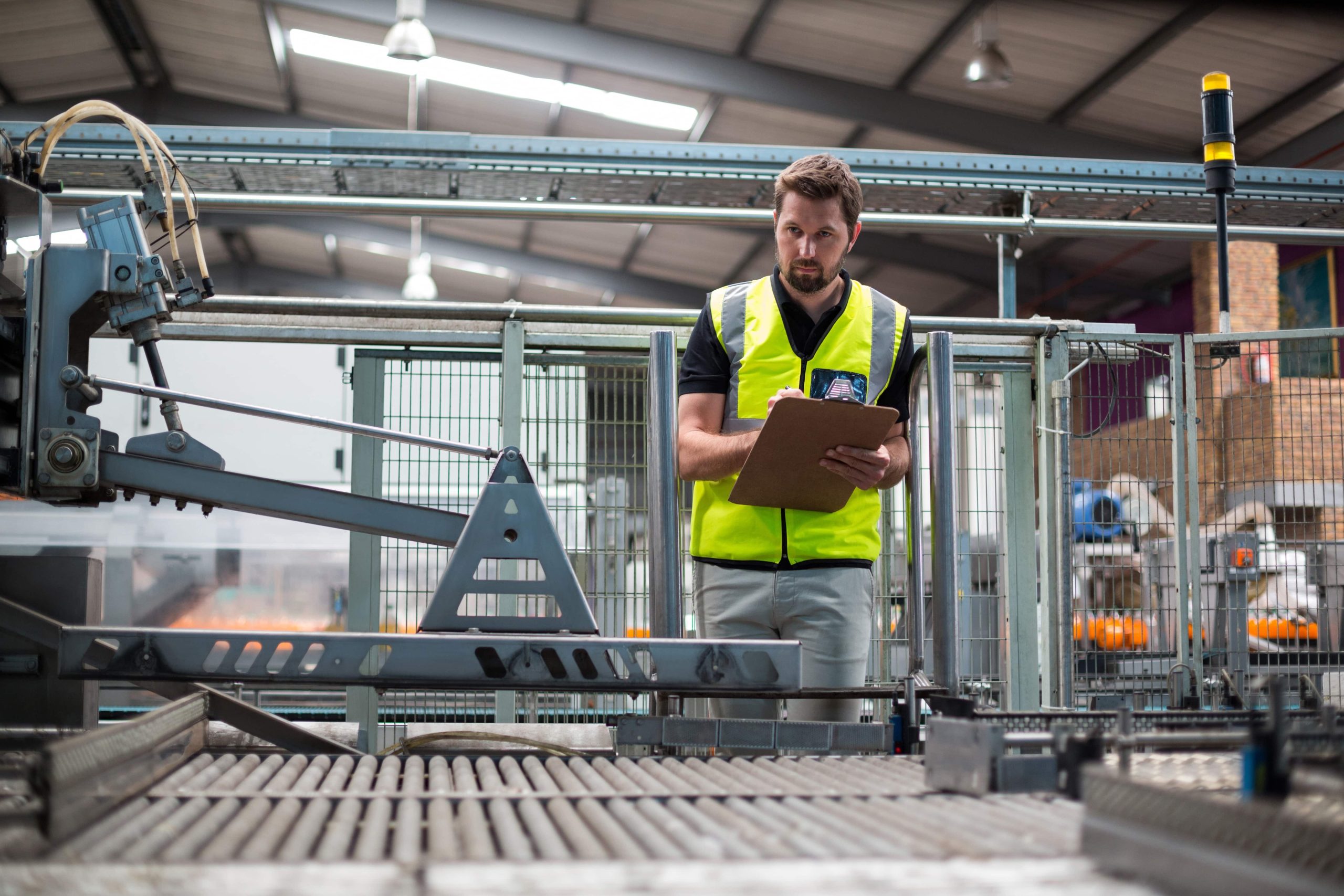BLOG
HSE statistics 2022 reveal a sharp rise in worker injuries
Written on 23 November 2022

Latest figures from the Health and Safety Executive (HSE) show a 28% increase in worker injuries year on year – and a steep increase in ill health compared to pre-pandemic levels.
The HSE has now released its annual summary statistics for Great Britain, providing new insight into health and safety at work in 2022.
At a headline level, 1.8 million workers suffered from work-related ill health (new or longstanding) in 2021/22, up 5.8% from last year. This reveals a worrying trend around mental health, although new cases are down, from 850,000 to 722,000.
Equally concerning is the fact that 565,000 workers sustained a non-fatal injury in 2021/22 according to self-reports – representing a year-on-year increase of 28%. Injuries reported by employers under RIDDOR have also increased, from 51,211 to 61,713, although this is likely to be as a result of more people returning to work after the pandemic.
While a 28% increase in work-related injuries is alarming at face value, it’s important to note that this is still lower than post-pandemic levels. Indeed, 693,000 workers sustained a non-fatal injury in 2019/20 and 581,000 workers were injured in 2018/19, the last year unimpacted by the pandemic.
Conversely, the number of new ill-health cases has almost doubled compared to pre-pandemic times, from 497,000 to 722,000. Total cases have also risen from 1.4 million to 1.8 million – an increase of 29%.
Additionally, highlighting the devastating consequences of poor health and safety practices, the report confirms that 123 workers were killed at work during this period, validating provisional data from its fatal injuries report released earlier this year.
The causes of ill health
Stress, depression and anxiety remains the leading cause of work-related ill health, accounting for 51% of all ill-health cases.
Echoing previous years, musculoskeletal disorders (MSDs) were the second most common cause of ill health, making up 27% of all cases. That said, in terms of actual figures, the number of MSD cases has remained broadly flat, increasing marginally from 470,000 to 477,000.
Meanwhile, though the total number of workers suffering from work-related stress, depression or anxiety has increased from 822,000 to 914,000, there has been an 17.5% drop in new cases, from 451,000 to 372,000.
Nick Wilson, Director of Health & Safety Services at WorkNest, commented: “It’s interesting to see that new cases of work-related stress, depression and anxiety have fallen over the past year. This is somewhat surprising, given the various stressors people are facing at present, though of course not all of these are work-related. Still, this doesn’t change the fact that, overall, cases have increased by 11.2% and we now know that 17.0 million working days were lost as a result – emphasising that this should remain a key area of focus for employers, not only for their staff’s sake but for the sake of business productivity too.”
Sector-wise, human health/social work and public administration/defence were found to have the highest rates of work-related ill health. Notably, while Education remains in third with 160,000 ill-health cases (59% of which related to stress, depression and anxiety), it seems some progress is being made, as its rate of ill health per 100,000 workers is no longer statistically significantly higher than the all-industry average.
Do you need support?
Speak to us for an honest, no obligation chat on:
0345 226 8393 Lines are open 9am – 5pm
Injuries
By accident type, the report reflects previous years. Slips, trips or falls on same level; handling, lifting or carrying; and being struck by a moving object remain the leading cause of non-fatal work-related injuries, followed by acts of violence and falls from height.
By sector, agriculture, forestry and fishing, construction, wholesale/retail trade; repair of motor vehicles; and accommodation/food service activities had statistically significantly higher workplace injury rates compared to the average rate across all industries.
The cost to businesses
This year’s report includes some interesting figures around the cost of work-related injury and ill health to businesses – data that was missing from the previous year’s report due to the coronavirus pandemic.
Crucially, it reveals that a staggering 36.8 million working days were lost due to work-related ill health and non-fatal workplace injury in 2021/22.
In addition, latest available data shows the significant costs incurred by employers, individuals and the government. In total, work-related injuries and new cases of ill health (excluding long latency illness such as cancer) cost an eye-watering £18.8 billion in 2019/20, £3.5 billion of which was borne by employers.
Broken down further, £11.2 billion of the total cost was incurred by new ill-health cases, with £7.6 billion due to workplace injuries.
Nick Wilson said: “The fact that 60% of this total cost comes from ill health is worth noting, as employers often devote their health and safety efforts to accident reduction, when in fact it’s ill health that stands to cost them more.”
He added: “Of course, a big part of this cost comes from absences. The report shows that 1% of injuries and 3.3% of ill-health cases result in time off work. Again, ill health seems to be the bigger problem to tackle; while injuries are now slightly less likely to result in time off than they were in 2013 (back then, 1.4% of cases led to time off work), the number of ill-health cases that require time off has crept up in the past decade (from 1.9%).”

COVID
Turning to the COVID-19 pandemic, the report reveals that in 2021/22, 123,000 workers suffered from a new or longstanding case of COVID-19 which they believe may have been from exposure to coronavirus at work. This represents 32% increase on last year, despite – or perhaps because of – a perception that the pandemic is behind us and the virus having become less of a focus for employers.
Nick Wilson said: “Despite many organisations maintaining some sort of hybrid working model, working practices have largely returned to normal, and many people are now back at work with fewer COVID precautions in place. The HSE’s new stats are a stark reminder that COVID hasn’t gone away, and while figures suggest that the winter wave has already peaked, employers must continue to take reasonably practicable measures to reduce this risk.”
There has, however, been a drop of almost 10% in the number of workers suffering from a work-related illness either caused or made worse by the effects of the coronavirus pandemic, from 645,000 to 585,000. Unsurprisingly, around a quarter of those suffering were in human health and social work activities, with higher than average rates also reported in public administration/ defence and education.
Nick Wilson, Director of Health & Safety Services
WorkNest
More to be done
Nick Wilson concludes: “While the number of injuries to workers is lower than pre-pandemic levels, it’s disappointing that the decrease we saw last year hasn’t been maintained. The fact that this year’s figure has shot back up also suggests that the perceived improvements noted in last year’s report may have simply been down to the pandemic and fewer people working rather than any real improvement in workplace health and safety.”
He adds: “Some might say a rise in injuries was inevitable given the wider return to work, but it’s important that employers don’t become complacent. COVID-19 put health and safety firmly on the agenda, and it must continue to be a priority now that the immediate threat of the pandemic has subsided. To drive down the numbers further, employers should focus on the suitability of their risk assessments, particularly as many won’t have revisited them since reopening.”
“More worryingly, however, is the rise we’re seeing in workplace ill health compared to pre-pandemic levels. Employers must recognise that ill health, including stress and anxiety that may be caused or aggravated by work, is considered alongside all the traditional workplace hazards we are accustomed to tackling.”
The full report is available here.
Related Content
Get health and safety in order with WorkNest
The average fine for health and safety breaches now sits at £145,000 – that’s before you factor in absences, lost productivity, higher insurance premiums and other costly consequences.
If you’re not fully confident in your health and safety practices, or worried you might not be compliant, WorkNest’s Health & Safety specialists can help.
With ongoing consultant support underpinned by annual audits and a bespoke policy and handbook – plus simple risk management software and engaging eLearning courses for employees – our comprehensive fixed-fee service is the perfect solution for those looking to improve their approach to health and safety management.
Whether you have nothing in place or would benefit from additional professional support, get in touch to see how we can make risk management easier. Call us on 0345 226 8393 or request your free consultation using the button below.









